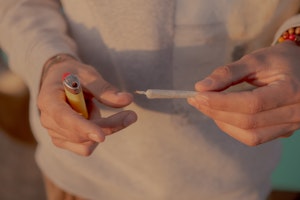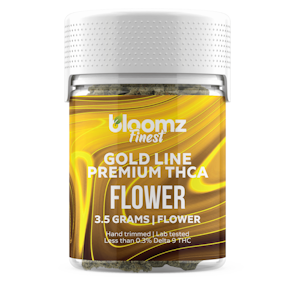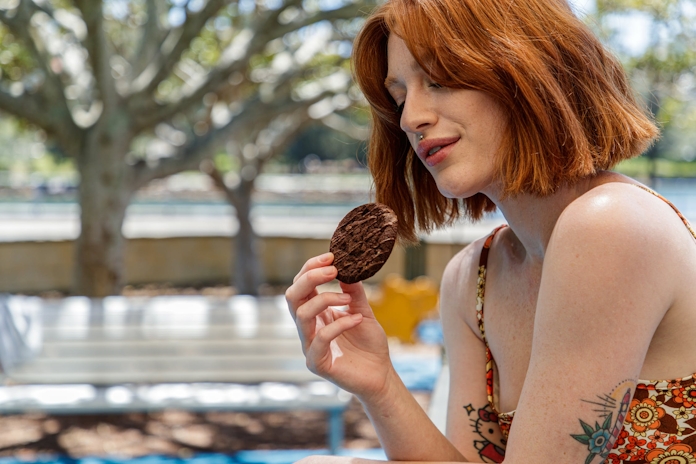
Photo by Visionair Media
How To Decarb Weed For The Perfect Edibles
Before you start making edibles, don't forget to decarb your weed.
There’s a reason people don’t just eat dried cannabis buds.
Whether fresh or dried, cannabis won’t get you high unless heated. The act of transforming a sticky weed into a mind-blowing medicinal plant relies on a process called decarboxylation.
In chemical terms, decarboxylation is removing an acid (carboxyl) group from a fat molecule. This crucial chemical transformation is what unlocks the psychoactive potential of cannabis, making it effective for both recreational and medicinal use.
But what is decarboxylation in layman’s terms? This article tells you everything you need to know about decarboxylation and how to decarboxylate weed correctly.
First things first: if you want to decarboxylate weed properly, invest in a professional decarboxylation machine. It’s not mandatory, but it makes the task much easier.
What Is Decarboxylation?
One way to think about decarboxylation is as an activation.
To “activate” your herb, you’ll need to break down the components of cannabis resin from fatty acids into their more potent and medicinal formats. Marijuana causes a psychoactive “high” thanks to tetrahydrocannabinol (THC).
This THC, however, is not found in fresh cannabis plants. The psychoactive only shows up on fresh plants in trace amounts. Instead, trichome-coated flowers are rich in THCA, the acid form of THC.
Believe it or not, THC is a breakdown product of THC-Acid. As THCA ages, it loses some of its chemical bonds. When cannabis flowers are dried and cured, small amounts of THCA are converted to THC. Yet, the trace amounts of THC in dried buds are not enough to produce a substantial psychoactive effect.
It would help if you had heat to speed up the process and ensure that more THCA is converted into its more psychoactive relative. Smoking, vaporizing, and heating the herb unlocks the plant’s psychoactive potential.
The process of converting THC-Acid into psychoactive THC is called decarboxylation. Often abbreviated to “decarbing,” understanding this simple science is helpful for herb smokers and culinary artists.
Not only does decarboxylation explain why smoking is one of the most popular ways to consume the cannabis plant, but decarbing your herb and concentrates before cooking is a surefire way to make potent and effective edibles.
Decarbing In Simple Terms
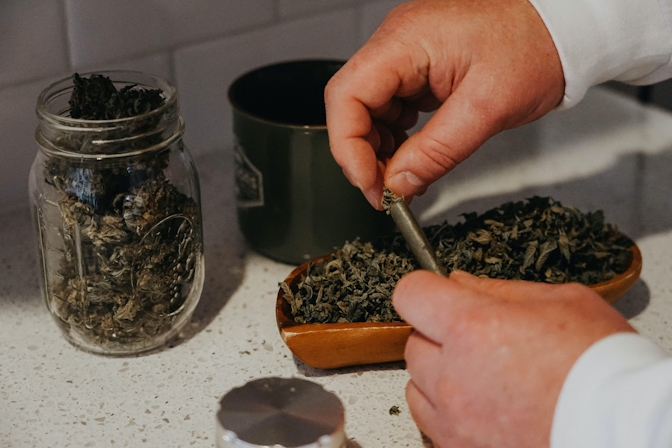
Photo by Elsa Olofsson / Pexels
Simply put, decarboxylation is like activating the potency of cannabis. When you have fresh cannabis, it doesn’t have what gets you high (THC), but THCA is like the sleepy cousin of THC.
But when you dry and heat the cannabis, the THCA is transformed into the active, psychoactive THC, which produces the high we love. This process is called decarboxylation.
Whether you smoke or cook with it, decarboxylation of cannabis is the key to unlocking its full potential, ensuring you get the most out of your weed. So, whether you want those potent and effective edibles or an excellent smoking experience, decarboxylation is the magic step you can’t skip.
Your Legal Bet: THCA Hemp Flower
Delta 9 THC is federally illegal, but THCA flower isn’t.
If legality is an issue for you, we’ll point you in the right direction with a potent flower that will get you just as high as Delta 9 THC without legal worries.
The THCA Hemp Flower from Bloomz is your best option for high-quality, sticky nugs that produce the finest edibles. THCA is the precursor to Delta 9 THC, meaning THCA becomes Delta 9 THC when heated. Because it’s not technically Delta 9 THC when sold, it’s federally legal.
When heating THCA flower for edibles, it decarboxylates and produces the familiar psychoactive effects of Delta 9 THC. The THCA Hemp Flower from Bloomz is incredibly potent and comes in 3.5g and 7g options, also in the following strains/flavors:
- Indica – Grape Frosty, Han Solo
- Hybrid – MAC (Miracle Alien Cookies)
How To Decarb Weed
Decarboxylation, the process that activates the potent properties of cannabis, naturally occurs when you smoke or vaporize it due to heat application. However, if you plan to use cannabis for cooking and want to ensure the best results, you must follow a few additional steps. The good news is that decarbing your cannabis at home is a straightforward process.
Decarboxylating your herb before cooking is essential to create high-quality edibles.
The exciting part is that you can achieve this with cannabis flower and concentrates using your oven. Once your cannabis is decarboxylated, you can infuse butter, oils, and alcoholic beverages or use it as a psychoactive seasoning for your culinary adventures.
To get started, let’s reference a handy timetable for different standard methods of decarboxylation:
Table: Decarboxylation Temperatures and Times
- 310°F (154.4°C) in the oven for 10 – 18 minutes (Plant Material) or 5 – 10 minutes (Kief / Hash)
- 250°F (121.1°C) with hot oil until bubbles taper off (Cannabis Oil)
- 240°F (115.5°C) in the oven for 50 – 60 minutes (Plant Material) or 30 – 40 minutes (Kief / Hash)
- 212°F (100°C) in a boiling water bath for 90 minutes (Plant Material and Kief / Hash)
Following this timetable is crucial, but there are some key considerations when decarbing.
Temperature plays a pivotal role—the lower the temperature, the longer the decarboxylation process will take. It’s important to note that lower temperatures help retain valuable terpenes, the aromatic oils responsible for the unique flavors and potential medicinal benefits of your cannabis.
Here’s a general guide to decarboxylation:
Materials You'll Need
- Coarsely ground cannabis (larger chunks are better)
- Baking tray with raised edges
- Parchment paper
- Wooden spoon or spatula
- Oven mitt
- Oven thermometer
How To Decarboxylate Your Flower
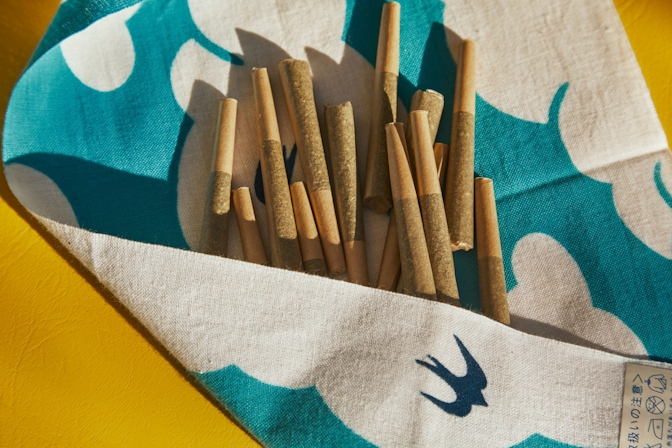
Photo by Dad Grass / Pexels
- Preheat your oven to 240°F (115.5°C). Use an oven thermometer for precise temperature control; even a 10°F difference could risk burning your cannabis.
- Line your baking sheet with parchment paper.
- Spread your coarsely ground cannabis evenly on the baking pan, ensuring proper spacing for even heat distribution.
- Toast the cannabis for 40 minutes, checking and gently stirring at 20 minutes and 30 minutes. Please remove it from the oven as soon as it develops a light, toasted color.
- Avoid leaving the oven door open for extended periods while checking your cannabis, as it can cause heat loss. Your cannabis should transition from vibrant green to a golden brown or dark green color.
- Following these steps will help you master the art of decarboxylation, ensuring your cannabis is primed for creating flavorful and effective edibles.
Knowing When To Decarb Weed
If you’re hoping to get the most from your cannabis, decarbing is essential. Decarboxylation is the only way to achieve a strong psychoactive effect from your weed. Yet, apart from simply taking a lighter to a bowl, where’s when it’s helpful to decarb:
- Before making infused oils, edibles, drinks, and foods
- Before making tinctures
- Before adding cannabis concentrates to edibles and drinks
- After making full-extract extractions at home
While decarbing is necessary to tap into the cannabis plant’s mind-altering nature, a psychoactive experience isn’t always appropriate for everyone.
Fortunately, for those hoping to tap into the healing potential of cannabis without the high, there is some benefit to keeping things raw. The cannabinoid acids found in uncured and unheated cannabis plants may not be as well-researched as THC, but they are not without their benefit.
Early research in the lab suggests that THCA may be helpful as an anti-nausea and anti-inflammatory aid. Virtually no human trials examine just how effective THC-acid can be.
However, many medical patients use fresh cannabis in juices and smoothies to take full advantage of the potential benefits cannabinoid acids may provide.
Do You Decarboxylate CBD?
Just like THC, only trace amounts of activated CBD exist on the fresh cannabis plant. Instead, consumers can expect high quantities of CBD acid. Like THC-acid, the acid form of CBD is less bioavailable than the decarboxylated stuff.
While there may be many undiscovered benefits of CBDA, it’s the decarboxylated stuff you’ll find in the tinctures and infused oils often sold online.
The exception is often isolated CBDA crystalline, a purified CBD extraction. Like all cannabinoid acids, CBDA crystalline will transform into CBD when heated via baking, dabbing, vaporization, and smoking.
However, those hoping to supplement with the raw extraction may be able to melt CBDA crystals in a warm beverage like coffee or tea without triggering a whole decarboxylation reaction.
A complete decarboxylation can happen at various temperatures over prolonged periods.
CBDA crystalline can melt in your average cup of coffee, but that won’t equate to a cup full of CBD. To decarboxylate CBDA at such a low temperature, you would need to heat the crystals in your coffee for several hours. With a hotter temperature, like those achieved with a vaporizer, you can expect a fast decarboxylation reaction with any CBDA extraction.
Herb Recommended Products:
READ MORE
